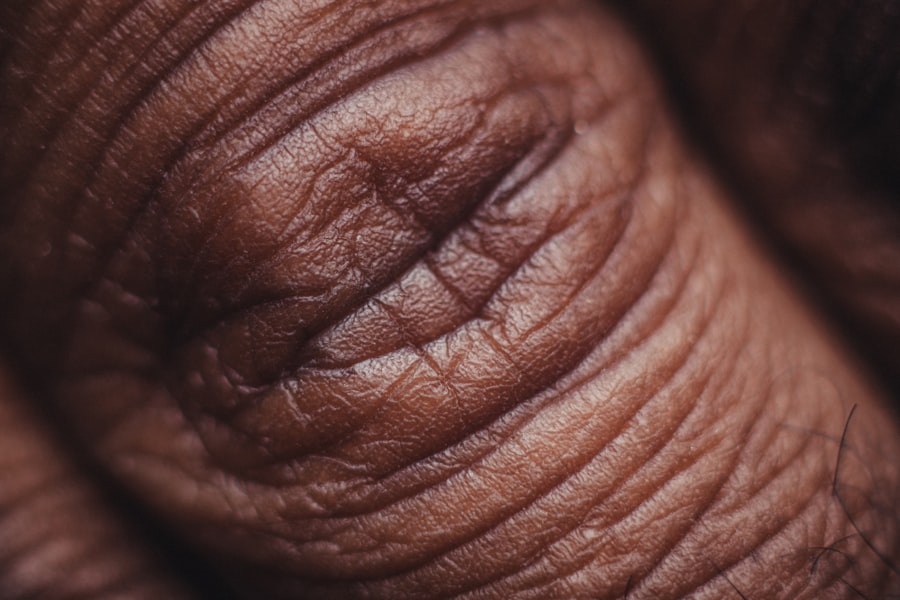Laser hair removal is a popular cosmetic procedure that utilizes concentrated beams of light to target and eliminate unwanted hair. The process begins with the laser emitting a specific wavelength of light that is absorbed by the pigment in the hair follicles. This absorption generates heat, which effectively damages the follicles and inhibits future hair growth.
As you consider this treatment, it’s essential to understand that it works best on individuals with light skin and dark hair, as the contrast allows the laser to target the hair more effectively. The procedure typically involves multiple sessions to achieve optimal results, as hair grows in cycles, and not all hair is in the same growth phase at any given time. During your initial consultation, the provider will assess your skin type, hair color, and overall health to create a tailored treatment plan.
You may also be informed about the duration of each session, which can vary depending on the area being treated.
Understanding this process will help you prepare mentally and physically for what lies ahead.
Key Takeaways
- Laser hair removal targets hair follicles to inhibit future hair growth
- Look for a provider with proper certification and experience in laser hair removal
- Shave the treatment area and avoid sun exposure before the session
- Topical anesthetics and cooling devices can help manage discomfort during treatment
- Potential risks include skin irritation, pigment changes, and rare scarring; post-treatment care is crucial
Finding a Qualified and Experienced Provider
Choosing the right provider for your laser hair removal is crucial to ensuring a safe and effective experience. You should seek out licensed professionals who specialize in laser treatments and have a solid track record of successful procedures. Start by researching local clinics and reading reviews from previous clients.
Personal recommendations from friends or family can also be invaluable in finding someone trustworthy. When you visit potential providers, don’t hesitate to ask about their qualifications, experience, and the types of lasers they use. During your consultation, pay attention to how comfortable you feel with the provider.
A good practitioner will take the time to answer your questions and address any concerns you may have. They should also conduct a thorough assessment of your skin and hair type to determine the most suitable approach for your treatment.
Therefore, taking the time to find a qualified provider will pay off in terms of both safety and results.
Preparing Your Skin for Treatment
Preparation is key when it comes to laser hair removal. Before your first session, you’ll need to follow specific guidelines to ensure your skin is ready for treatment. One of the most important steps is to avoid sun exposure for at least two weeks prior to your appointment.
Tanning can increase the risk of complications and may affect the efficacy of the laser treatment. If you have recently tanned or have sunburned skin, it’s advisable to reschedule your session until your skin has returned to its normal state. In addition to sun protection, you should also refrain from waxing or plucking hair in the area being treated for several weeks before your appointment.
These methods remove hair from the follicle, which is counterproductive to laser hair removal since the laser needs to target the hair in its follicle form. Shaving is generally acceptable and even recommended, as it leaves the follicle intact while removing surface hair that could interfere with the laser’s effectiveness. By following these preparation steps, you can enhance your treatment experience and improve your overall results.
Managing Pain and Discomfort During Treatment
| Technique | Effectiveness | Cautions |
|---|---|---|
| Medication | High | May cause side effects |
| Physical Therapy | Moderate | Requires trained professional |
| Relaxation Techniques | Low | May not work for everyone |
While many people report that laser hair removal is relatively painless, some discomfort may occur during the procedure. The sensation can be likened to a rubber band snapping against your skin or a mild prickling feeling. To help manage any pain or discomfort, most clinics offer topical anesthetics that can be applied before treatment.
Discussing pain management options with your provider during your consultation will ensure you are well-prepared for what to expect. Additionally, some modern laser systems come equipped with cooling devices that help minimize discomfort during treatment. These devices work by cooling the skin before, during, and after each pulse of the laser, making the experience more comfortable for you.
If you have a low pain threshold or are particularly anxious about discomfort, don’t hesitate to communicate this with your provider; they can adjust their techniques or suggest additional methods to help you feel more at ease throughout the process.
Understanding the Potential Risks and Side Effects
Like any medical procedure, laser hair removal comes with its own set of potential risks and side effects. While most individuals experience minimal side effects such as redness or swelling in the treated area, it’s essential to be aware of more serious complications that can occur. These may include blistering, changes in skin pigmentation, or even scarring in rare cases.
Understanding these risks will help you make an informed decision about whether this treatment is right for you. To minimize these risks, it’s crucial to follow all pre- and post-treatment instructions provided by your practitioner. This includes avoiding sun exposure and using sunscreen on treated areas after your sessions.
Additionally, if you have a history of skin conditions or are taking medications that affect your skin’s sensitivity, be sure to disclose this information during your consultation. By being proactive about your health and safety, you can significantly reduce the likelihood of experiencing adverse effects from laser hair removal.
Post-Treatment Care and Maintenance

After undergoing laser hair removal, proper post-treatment care is vital for achieving the best results and ensuring your skin heals correctly. Immediately following your session, you may notice some redness or swelling in the treated area; this is normal and should subside within a few hours to a couple of days. To soothe any discomfort, applying a cold compress can be beneficial.
Your provider may also recommend specific topical treatments or moisturizers to help calm your skin. In addition to immediate care, maintaining healthy skin post-treatment is essential for long-term results. You should avoid sun exposure for at least two weeks after each session and apply sunscreen regularly on treated areas when exposed to sunlight.
This will help prevent pigmentation changes and protect your skin as it heals. Staying hydrated and following a gentle skincare routine will also support your skin’s recovery process and enhance the effectiveness of your laser hair removal treatment.
Managing Expectations and Setting Realistic Goals
As you embark on your laser hair removal journey, managing your expectations is crucial for a satisfying experience. While many individuals achieve significant hair reduction after several sessions, it’s important to understand that complete hair removal may not be possible for everyone. Factors such as hair color, skin type, hormonal changes, and individual response to treatment can all influence outcomes.
Setting realistic goals will help you maintain a positive outlook throughout the process. During your initial consultation, discuss your desired results with your provider so they can help set achievable expectations based on their expertise and experience with similar cases. They can provide insights into what you can realistically expect after each session and how many treatments may be necessary for optimal results.
By having open communication with your provider and understanding what is achievable, you can enjoy a more fulfilling experience with laser hair removal.
Long-Term Considerations and Follow-Up Treatments
Laser hair removal is often viewed as a long-term solution for unwanted hair; however, it’s essential to recognize that follow-up treatments may be necessary over time. While many individuals experience permanent hair reduction after completing their initial series of sessions, some may notice fine hairs regrowing months or years later due to hormonal changes or other factors. Regular maintenance sessions can help keep these hairs at bay and ensure that you continue enjoying smooth skin.
As you consider long-term care, it’s wise to schedule follow-up appointments with your provider based on their recommendations. They can assess your progress and determine if additional treatments are needed to maintain your desired results. Additionally, staying informed about advancements in laser technology can provide insights into new options that may enhance your experience further down the line.
By prioritizing ongoing care and communication with your provider, you can enjoy lasting benefits from your laser hair removal journey for years to come.
If you’re looking for more information on laser hair removal prep, you may want to check out this article on fashion and beauty tips for laser hair removal. This article provides helpful advice on how to prepare for your laser hair removal treatment and what to expect during the process. Additionally, you can reach out to the experts at In Laser Hair Removal for personalized recommendations and guidance on how to customize your treatment based on your specific interests and needs.
FAQs
What is laser hair removal?
Laser hair removal is a cosmetic procedure that uses a concentrated beam of light (laser) to remove unwanted hair. The laser targets the pigment in the hair follicles, damaging them and inhibiting future hair growth.
How should I prepare for laser hair removal?
Before your laser hair removal treatment, it is important to avoid sun exposure and tanning beds, as well as plucking, waxing, or electrolysis for at least six weeks prior to the treatment. Shaving is typically allowed and recommended before the procedure.
Is there anything I should avoid before laser hair removal?
Before laser hair removal, it is important to avoid using any products that may irritate the skin, such as perfumes, deodorants, or lotions. It is also recommended to avoid taking any medications that may increase sensitivity to light, such as certain antibiotics or acne medications.
How many sessions are typically needed for laser hair removal?
The number of sessions needed for laser hair removal varies depending on the individual and the area being treated. On average, most people require 6-8 sessions spaced 4-6 weeks apart to achieve optimal results.
What are the potential side effects of laser hair removal?
Common side effects of laser hair removal may include temporary redness, swelling, and discomfort in the treated area. In rare cases, blistering, scarring, or changes in skin pigmentation may occur. It is important to discuss potential risks with a qualified practitioner before undergoing treatment.





